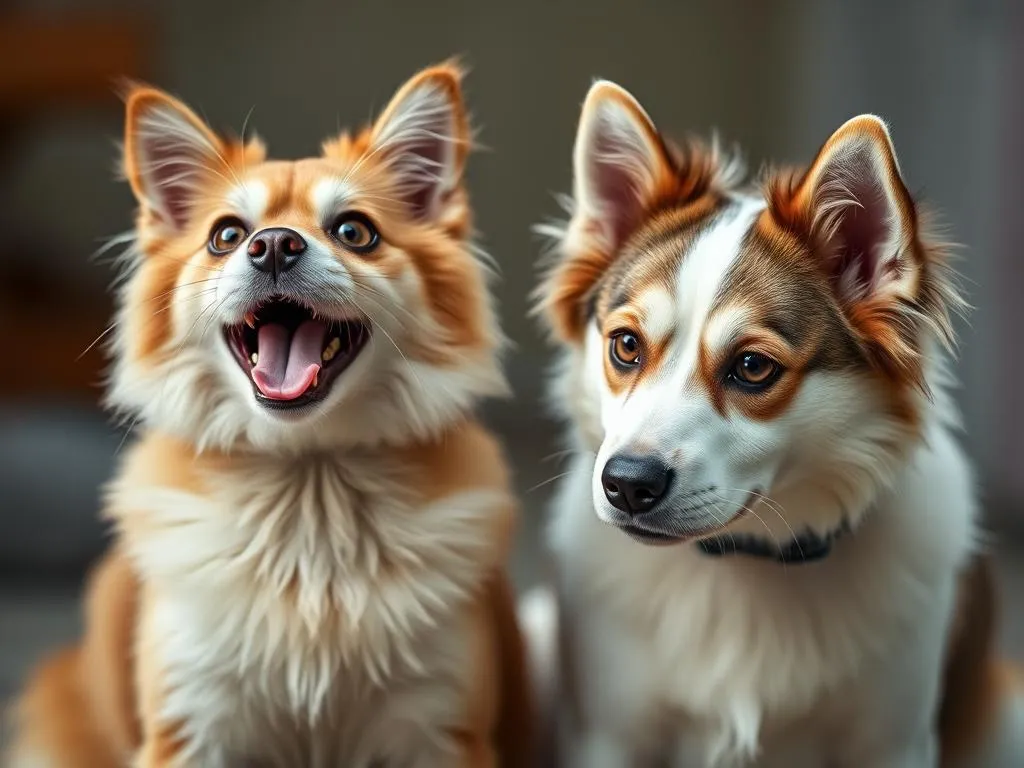
In recent years, the trend of multi-pet households has grown tremendously. More pet lovers are discovering the joy and companionship that both cats and dogs can bring into their lives. The idea of having a cat and a dog living harmoniously under one roof is not only appealing but also beneficial. Pets provide emotional support and can enrich our lives in various ways, and the relationship between a cat and a dog can be particularly rewarding for both the pets and their owners.
When considering adding a cat to your household that already includes a dog (or vice versa), it’s essential to choose wisely. Some cat breeds that get along with dogs are more sociable and adaptable than others. This article aims to explore these breeds and provide insights into how to foster a positive relationship between your feline and canine companions.
Understanding Cat and Dog Dynamics
The Nature of Cats and Dogs
Cats and dogs, despite being common household pets, exhibit distinctly different behaviors. Dogs are pack animals, often looking for social interaction and companionship. They thrive on structure, routine, and the company of humans or other animals. On the other hand, cats are more independent creatures. While they can be social, they have a different social structure and are often more territorial than dogs. Understanding these inherent differences is crucial when contemplating a multi-pet household.
Factors Influencing Compatibility
Several factors influence the compatibility between cats and dogs, including:
-
Age and Socialization of Pets: Younger pets are typically more adaptable and open to new experiences. A well-socialized dog may be more accepting of a feline companion, while a cat that has grown up around dogs is likely to be more comfortable in their presence.
-
Environment and Space Considerations: A spacious home allows pets to have their own territories, which can reduce potential conflicts. Ensuring that both pets have safe spaces can help ease their adjustment.
-
Individual Personality Traits: Just like humans, pets have unique personalities. Some dogs have a high prey drive and may not be suited to live with cats, while other dogs may show a calm demeanor, making them more compatible with feline friends.
Top Cat Breeds That Get Along with Dogs
Overview of Friendly Cat Breeds
When selecting cat breeds that get along with dogs, it’s essential to look for traits such as temperament, adaptability, and sociability. Here are some of the top cat breeds known for their friendly nature and ability to coexist with dogs.
Detailed Profiles of Each Breed
Ragdoll
Ragdolls are renowned for their affectionate and laid-back personalities. They are typically very sociable and enjoy being around people and other pets. Their docile nature makes them less likely to react negatively toward a dog, and they often adapt well to a canine companion. Ragdolls are known for their playful demeanor, which can lead to fun interactions with dogs, creating a harmonious household.
Maine Coon
Maine Coons are one of the largest domesticated cat breeds and are often referred to as “gentle giants.” Their friendly and sociable nature makes them an excellent choice for homes with dogs. They tend to be quite playful and enjoy engaging with their canine counterparts, often forming strong bonds. Their adaptability and laid-back demeanor allow them to coexist peacefully with dogs of various sizes and temperaments.
Abyssinian
Abyssinians are known for their playful and curious nature. They are intelligent cats that thrive on interaction and stimulation. This breed is often described as being dog-like in their behavior, as they enjoy following their owners around and participating in family activities. Their playful spirit can lead to engaging and entertaining interactions with dogs, making them a fantastic choice for multi-pet households.
Burmese
Burmese cats are known for their affectionate and sociable behavior. They are typically very people-oriented and tend to get along well with other pets, including dogs. Their friendly disposition makes them eager to form bonds with their canine companions. Burmese cats are often active and playful, which can result in a delightful dynamic with a dog, as they engage in play together.
Scottish Fold
Scottish Folds are recognized for their unique folded ears and round faces. They are generally easygoing and adaptable, making them well-suited for homes with dogs. Their calm demeanor allows them to navigate the presence of a dog without becoming overly stressed. Scottish Folds enjoy companionship and can often be found lounging near their canine friends or engaging in playful antics.
Other Breeds to Consider
In addition to the aforementioned breeds, other cat breeds such as the Siamese, Birman, and American Shorthair can also be good companions for dogs. Each of these breeds has unique traits that can foster a positive relationship with canines, though individual personality will always play a significant role.
Tips for Introducing Cats to Dogs
Preparing for Introduction
The introduction process is a critical phase in ensuring a harmonious relationship between your cat and dog. Preparation is vital. Create a safe space for both pets where they can retreat and feel secure. This area should be equipped with their essentials—food, water, litter box (for the cat), and cozy resting spots. Gradual introductions are essential to prevent overwhelming either pet.
The Introduction Process
-
Start with Scent: Begin by allowing the dog and cat to become familiar with each other’s scent. You can do this by exchanging bedding or toys between the two.
-
Controlled Meeting: After they have had time to adjust to each other’s scents, conduct a controlled meeting. Keep the dog on a leash, and allow the cat to come and go as they please. Observe their body language closely.
-
Monitor Interactions: Watch for signs of stress or aggression from either pet. If either pet appears fearful or aggressive, separate them and try again later.
-
Gradual Exposure: Repeat these controlled meetings several times before allowing them unsupervised time together. Gradual exposure helps build comfort and reduces the risk of confrontation.
Building a Positive Relationship
Encouraging positive interactions is crucial in fostering a bond between your cat and dog. Reward both pets with treats and praise when they display calm and friendly behavior towards each other. Engage them in joint activities, such as playtime with interactive toys, to help strengthen their relationship.
Common Challenges and Solutions
Behavioral Issues
While many cats and dogs can coexist peacefully, conflicts can arise. Common issues include jealousy and territorial behavior. For instance, a dog may become possessive of their toys, while a cat might feel threatened by the dog’s presence.
Solutions:
-
Establish Boundaries: Ensure both pets have their own space and belongings to reduce competition.
-
Training: Consistent training for the dog regarding appropriate behaviors around the cat can mitigate potential conflicts.
Health Considerations
In a multi-pet household, it’s essential to keep both pets healthy. Risks such as parasites can be more pronounced when you have both cats and dogs. Regular veterinary check-ups for both pets are crucial to prevent health issues.
Tips:
-
Regular Vet Visits: Ensure both pets are up-to-date on vaccinations and parasite preventatives.
-
Hygiene: Maintain cleanliness in shared spaces and regularly groom both pets to minimize risks.
Ongoing Management
Maintaining harmony requires ongoing management. Regularly assess the relationship between your pets and be proactive about their interactions. If conflicts arise, take steps to address them swiftly to prevent escalation.
When it comes to persistent issues, don’t hesitate to seek professional help from a veterinarian or animal behaviorist. They can offer tailored advice and training techniques to improve the dynamic between your pets.
Real-Life Experiences and Testimonials
Success Stories
Many pet owners have experienced the joy of having both cats and dogs cohabitating peacefully. For instance, one family adopted a Ragdoll cat and a Labrador retriever. Initially, the dog was overly excited about the new addition, leading to some tension. However, after following a gradual introduction process and providing a safe space for the cat, they now enjoy a wonderful bond, often seen napping together in the sun.
Expert Opinions
Veterinarians and animal behaviorists often emphasize the importance of understanding individual pet personalities when introducing a new companion. “Every pet is unique, and their comfort level with other animals can vary widely,” states Dr. Emily, a veterinarian specializing in animal behavior. “It’s crucial to take the time to understand their needs and adjust the introduction process accordingly.”
Conclusion
Choosing the right cat breeds that get along with dogs can significantly enhance the experience of having multiple pets in your home. Breeds like Ragdolls, Maine Coons, Abyssinians, Burmese, and Scottish Folds are known for their friendly nature and adaptability, making them excellent companions for dogs.
By understanding the dynamics between cats and dogs, preparing for their introduction, and proactively managing their interactions, you can foster a loving and harmonious environment for both pets. Remember to consider each pet’s individual personality and needs, as these factors will ultimately dictate the success of their relationship.
With patience and the right approach, your cat and dog can become the best of friends, enriching your home with their unique companionships and love.









